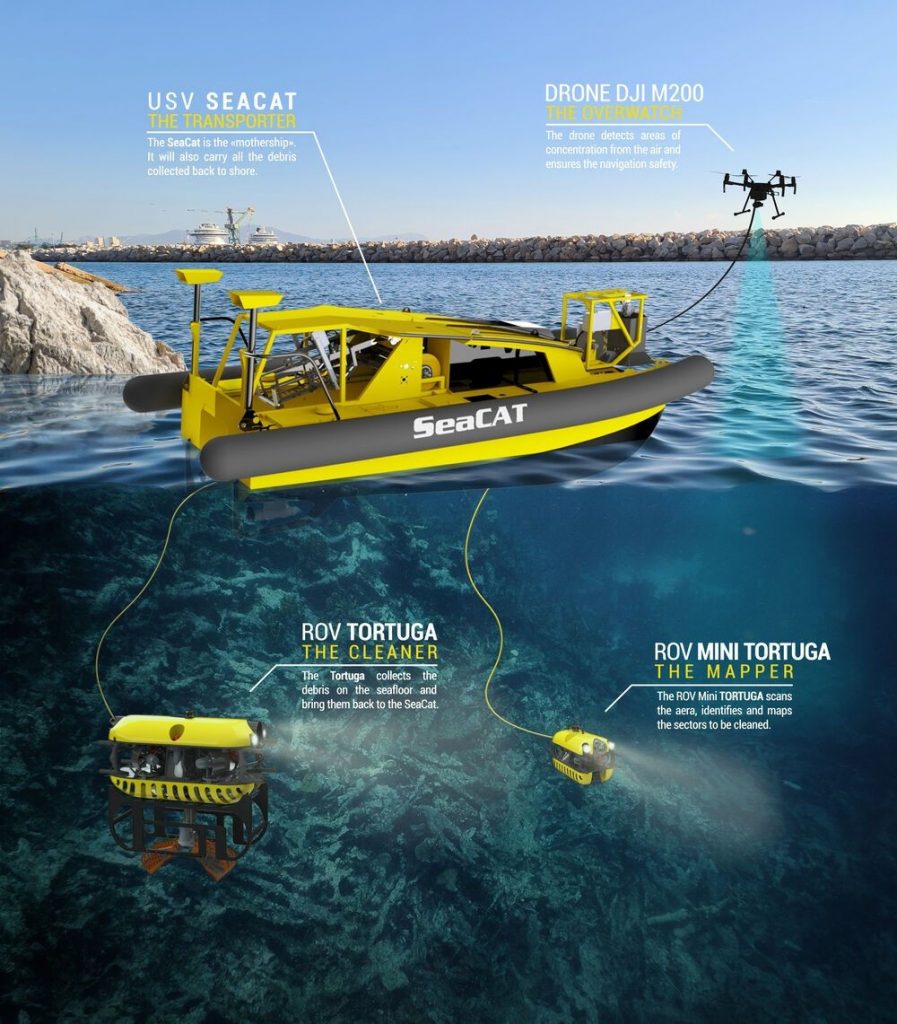
Dubrovnik, October 2023. SeaClear Demo – Demonstrations of the H2020 SeaClear project took place from October 4th to 13th, concluding the mission of finding a solution for cleaning the ocean floor from marine litter. As part of the scientific research project SeaClear, an autonomous heterogeneous system has been developed with the aim of detecting, mapping, and collecting litter from the sea floor. A team of autonomous surface and underwater robots utilizes underwater sensors to operate in conditions of low visibility and applies artificial intelligence to identify and separate marine life from litter. Collection is performed by an unmanned ROV equipped with a gripper , and the entire process is conducted in accordance with nature conservation standards.
Following intensive testing, the developed system was demonstrated to the public at two locations in the Dubrovnik-Neretva County, at Bistrina Bay and the island of Lokrum. The project’s results were presented to a wider audience through a public panel and a presentation during the final event of the project ‘Smart Robots and Human Hearts’.
The SeaClear project is funded through the HORIZON 2020-Research and Innovation Action program, with an allocation of nearly 5 million euros, including more than 600,000 euros allocated to the University of Dubrovnik (UNIDU). The project manager is Assoc. Prof. Dr. Ivana Palunko, the head of the Laboratory for Autonomous Intelligent Systems (LARIAT) at the Department of Electrical Engineering and Computing, UNIDU. The project also involves Assoc. Prof. Dr. Marijana Pećarević and Assoc. Prof. Dr. Kruno Bonačić from the Department of Applied Ecology, as well as Assoc. Prof. Dr. Nebojša Stojčić from the Department of Economics and Business Economics. Technical University of Delft, Netherlands is the main project coordinator, in partnership with the Technical University of Munich, the Technical University of Cluj-Napoca in Romania, and the University of Dubrovnik. The project also includes the French company SST – SubSeaTech, Fraunhofer Institute CML in Germany, and Hamburg Port Authority and the Regional Agency DUNEA as end users.
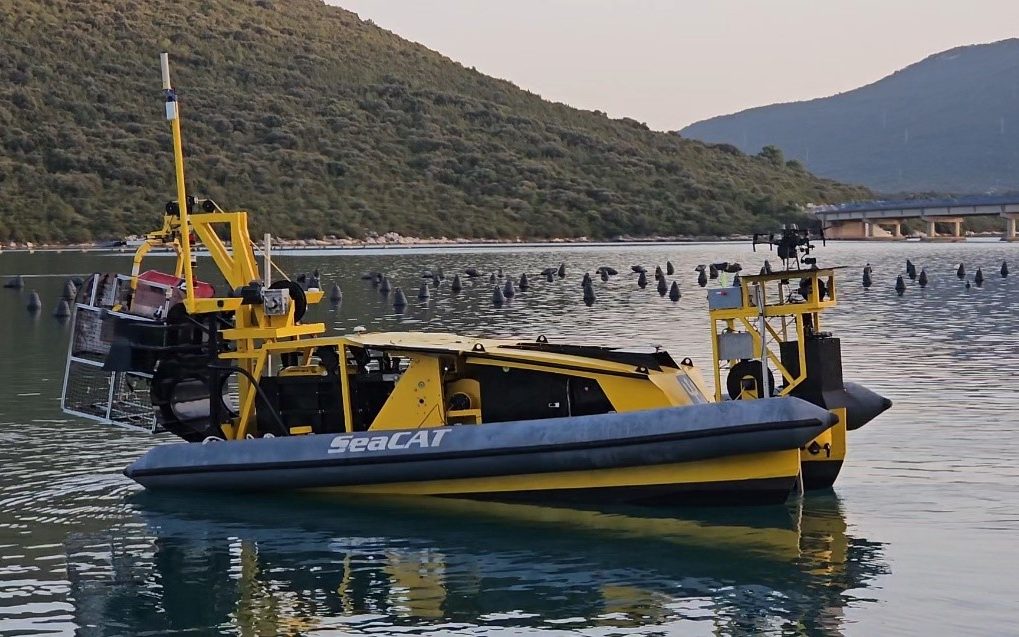
Bistrina and Lokrum demo
After several days of preparation, the first demonstration took place on October 9th in Malostonski Bay, Bistrina within the research area of the Laboratory for Mariculture at the University of Dubrovnik.

However, that was not the only opportunity for the public to familiarize themselves with the achievements of the SeaClear project. Just four days later, on October 13th, demonstrations were held in the beautiful waters surrounding island of Lokrum. The event was open to the public, and the interested audience had the opportunity to witness live testing from an accompanying vessel. The LARIAT-UNIDU team provided a ‘live’ broadcast from the seabed, allowing real-time monitoring of underwater robots and how they executed their assigned tasks. The SeaClear robotic system was operated from the UNIDU’s school-research vessel ‘Naše more’.
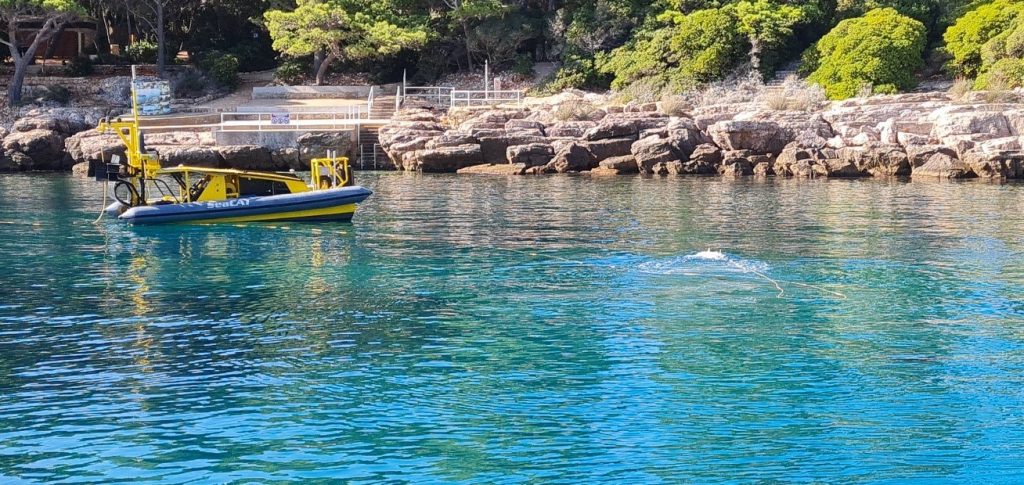
The demonstrations concluded successfully, accompanied by the applause and ovations by the audience. Thanks to everyone who supported our efforts and believes in the future of our system!
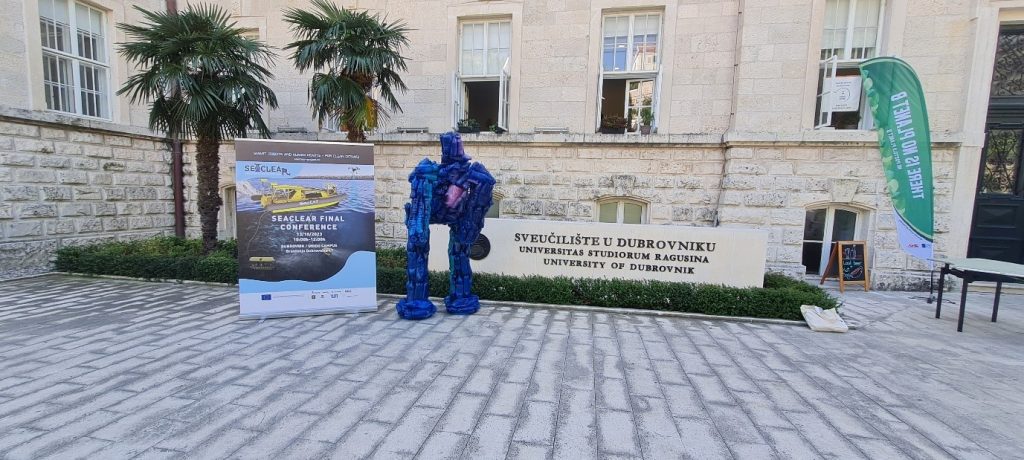
The final event of the SeaClear project took place on October 13, 2023, at the University of Dubrovnik Kampus. Participants had the opportunity to learn more about the project and the future of marine ecosystem preservation, meet experts from the SeaClear team, and learn more about the project’s achievements.
Invited speakers from the SeaClear consortium at the panel shared their knowledge and project experiences: Prof. Bart de Schutter from Delft University of Technology, Dr.sc. Stefan Sosnowski from the Technical University of Munich, Assoc. Prof. Ivana Palunko from LARIAT – University of Dubrovnik, Yves Chardard, CEO of SubSea Tech SAS, Prof. Lucian Busoniu from the Technical University Cluj-Napoca, Claudia Hertel-Ten Eikelder from Hamburg Port Authority, and Iva Pozniak from DUNEA Regional Agency, offered their insights and perspectives on the topic of marine ecosystem preservation.
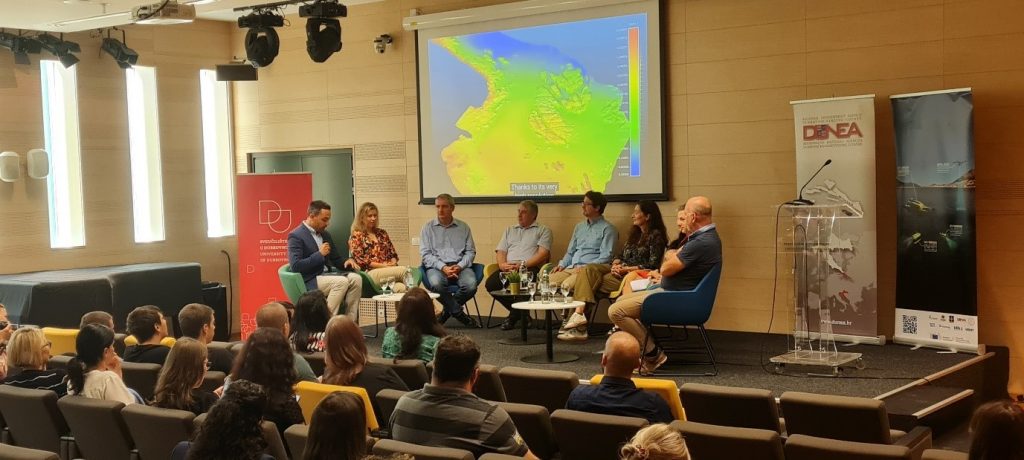
In conclusion, the SeaClear project serves as an inspiration and an example of how multidisciplinary collaboration and the use of innovative technologies can contribute to addressing one of the most critical environmental challenges of our time. Preserving our oceans and marine ecosystems is a shared goal, and SeaClear reminds us that this mission is achievable with smart robots and human hearts dedicated to protecting our planet.
For more information about the SeaClear project and its achievements, you can visit https://seaclear-project.eu/about-main/about-seaclear

